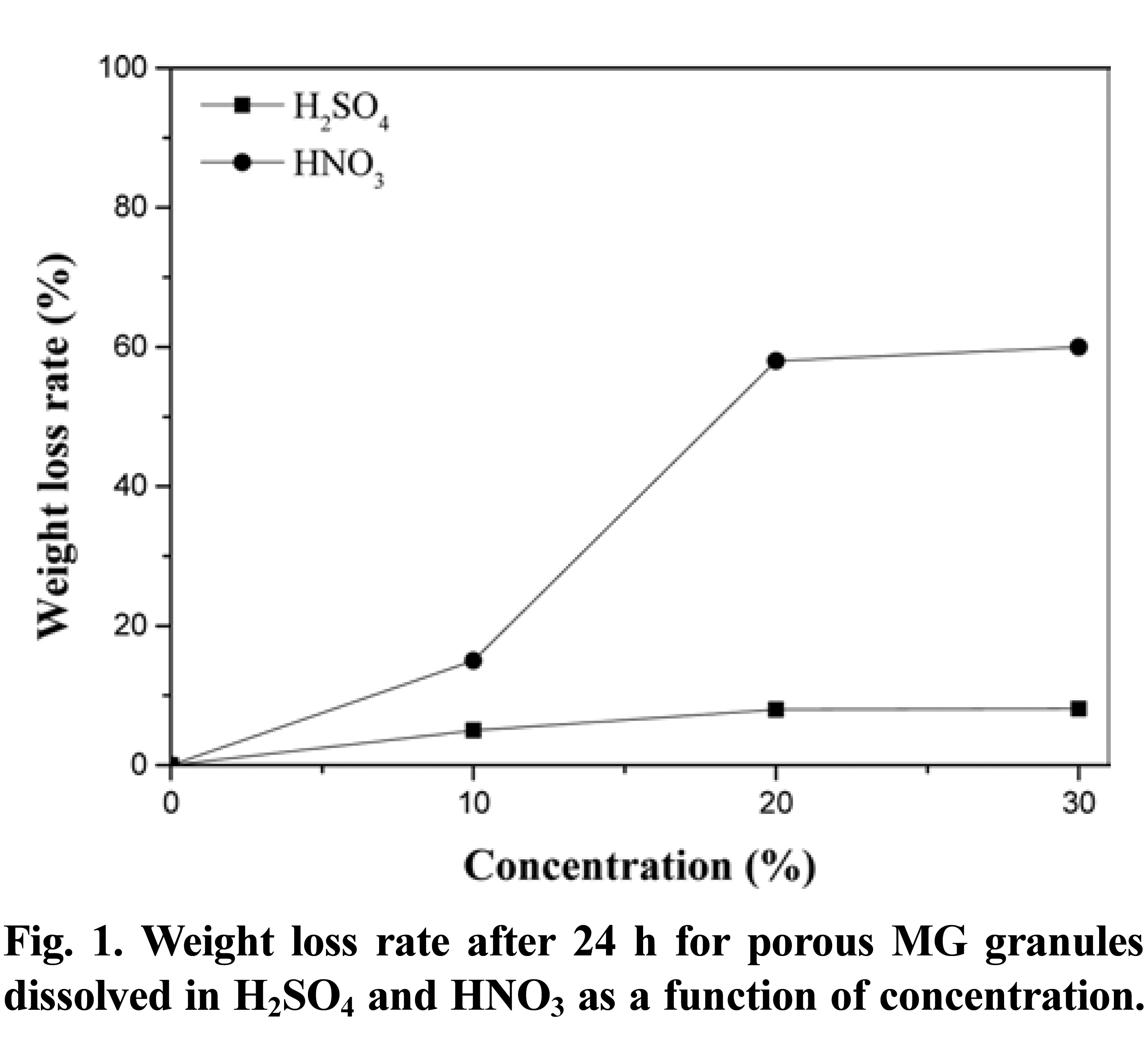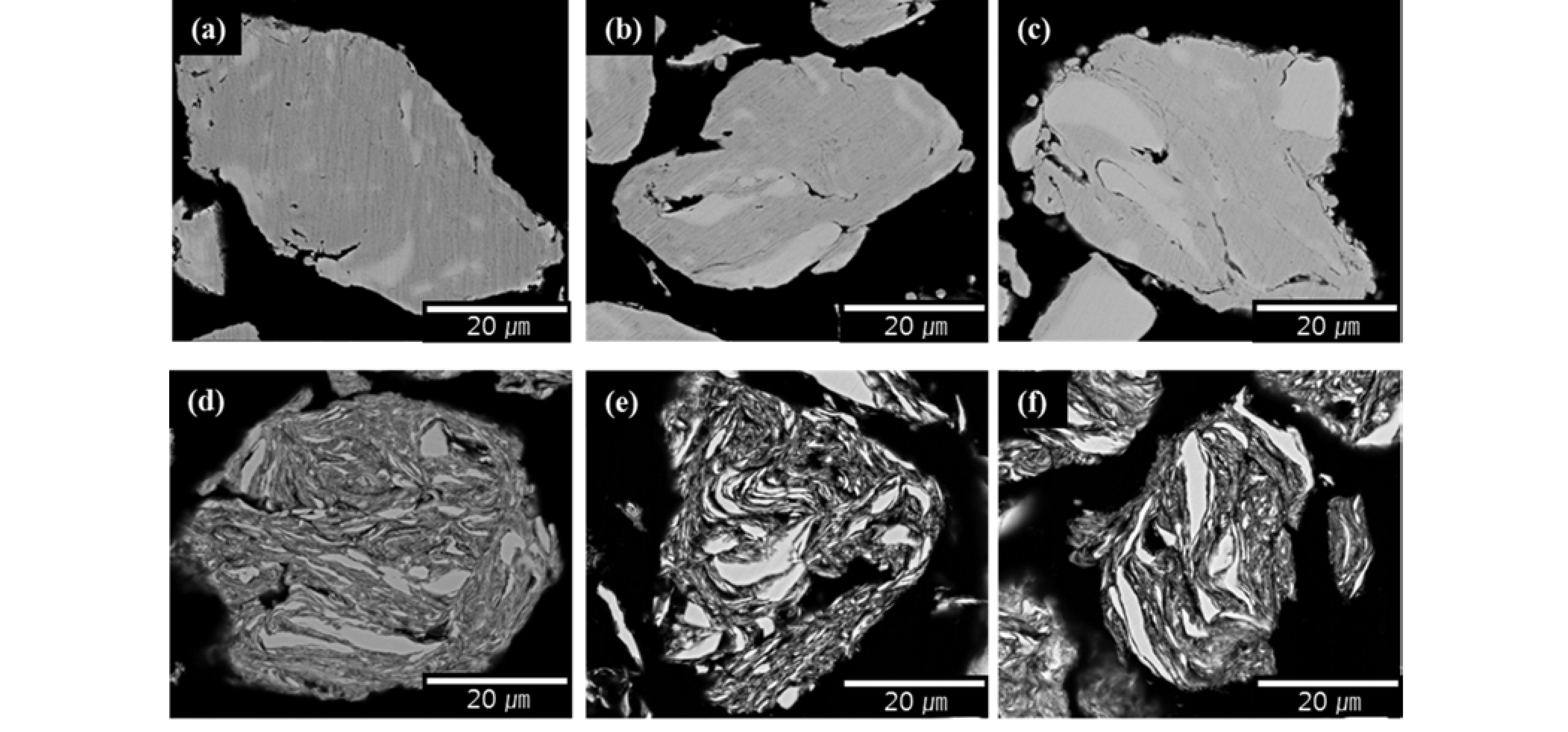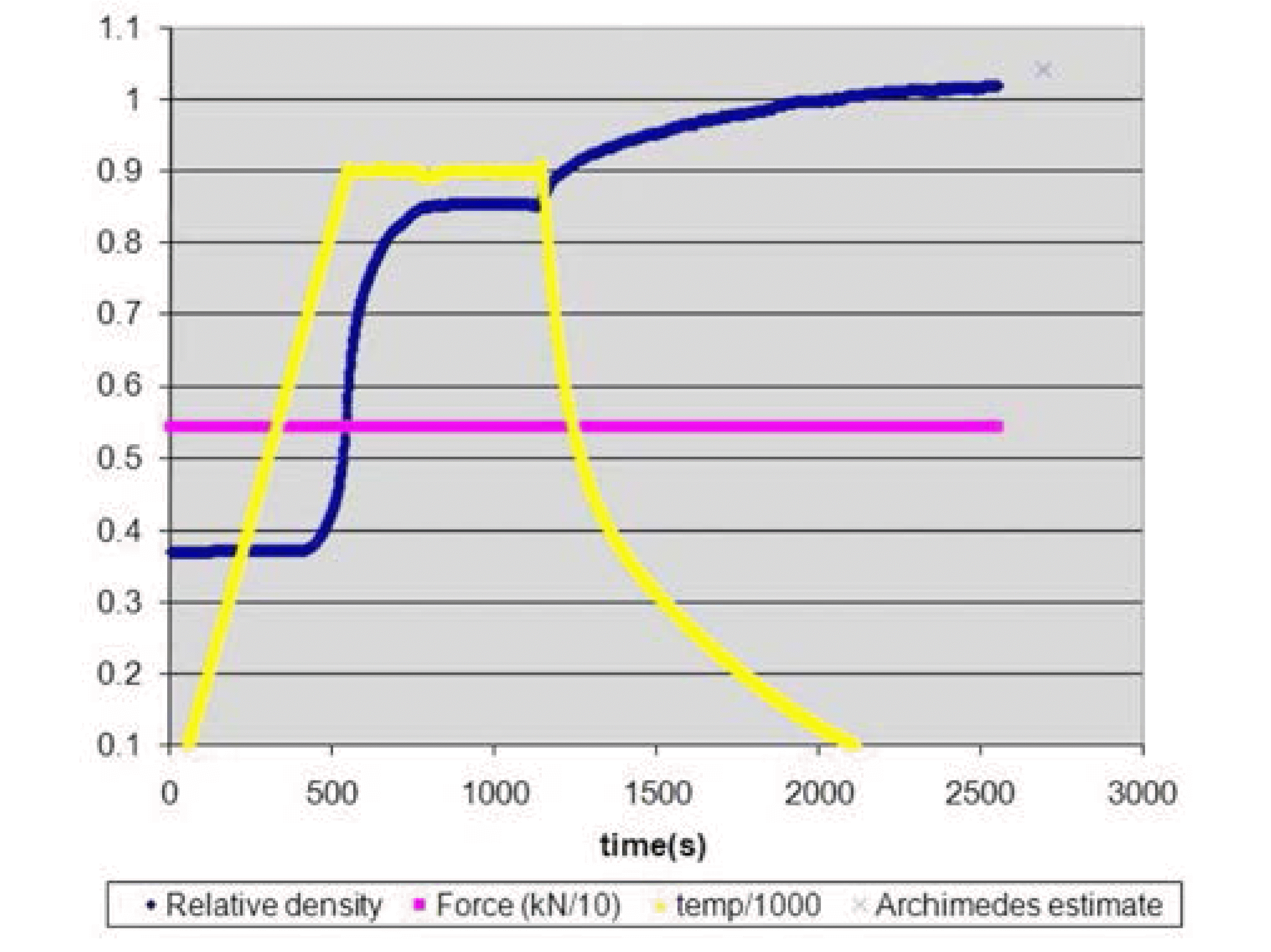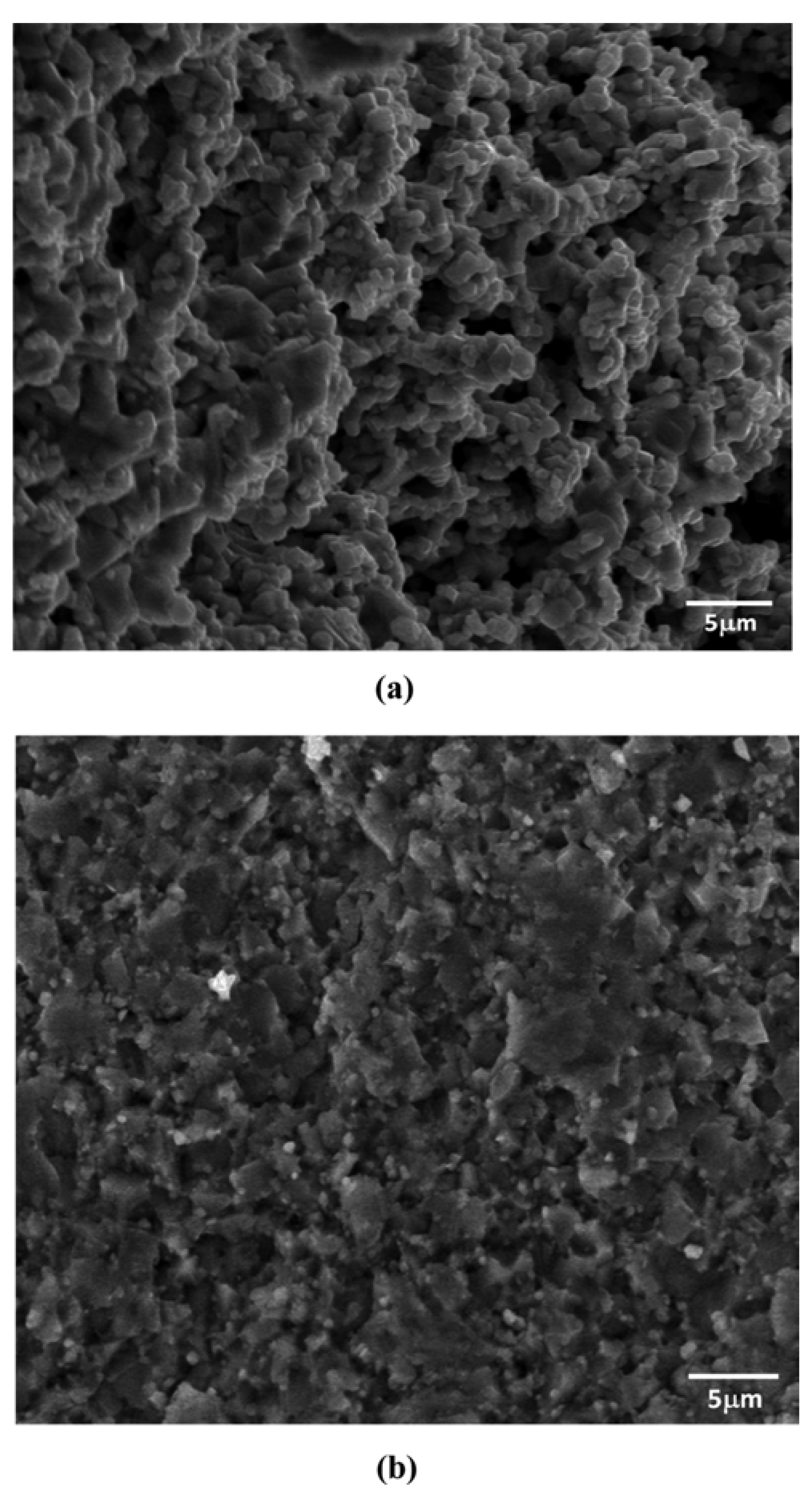Articles
- Page Path
- HOME > J Korean Powder Metall Inst > Volume 21(4); 2014 > Article
-
ARTICLE
- Spark Plasma Sintering Behaviors of M-type Barium Hexaferrite Nano Powders
- Im Doo Jung, Youngmoo Kima, Yang-Ki Hongb, Seong Jin Park*
-
Journal of Korean Powder Metallurgy Institute 2014;21(4):256-259.
DOI: https://doi.org/10.4150/KPMI.2014.21.4.256
Published online: July 31, 2014
- * Corresponding author: Seong Jin Park, TEL: +82-54-279-2182, FAX: +82-54-279-5899, E-mail: sjpark87@postech.ac.kr
• Received: August 12, 2014 • Revised: August 21, 2014 • Accepted: August 25, 2014
© Korean Powder Metallurgy Institute
This is an Open Access article distributed under the terms of the Creative Commons Attribution Non-Commercial License (http://creativecommons.org/licenses/by-nc/3.0/) which permits unrestricted non-commercial use, distribution, and reproduction in any medium, provided the original work is properly cited.
- 875 Views
- 5 Download
- 5 Crossref
Abstract
- A magnetic powder, M-type barium hexaferrite (BaFe12O19), was consolidated with the spark plasma sintering process. Three different holding temperatures, 850°C, 875°C and 900°C were applied to the spark plasma sintering process with the same holding times, heating rates and compaction pressure of 30 MPa. The relative density was measured simultaneously with spark plasma sintering and the convergent relative density after cooling was found to be proportional to the holding temperature. The full relative density was obtained at 900°C and the total sintering time was only 33.3 min, which was much less than the conventional furnace sintering method. The higher holding temperature also led to the higher saturation magnetic moment (σs) and the higher coercivity (Hc) in the vibrating sample magnetometer measurement. The saturation magnetic moment (σs) and the coercivity (Hc) obtained at 900°C were 56.3 emu/g and 541.5 Oe for each.
- Barium ferrite (BaFe12O19, BaM) is a hard-magnetic material, with a high coercive field and a high remnant magnetization. The crystal structure of BaM is the magneto plumbite type (M-type), which is the simplest crystal structure of hexaferrites. BaM has been widely used for high-frequency microwave devices due to its strong magnetic anisotropy and relatively low microwave losses. For the processing of BaM powder, spark plasma sintering (SPS) can be one of the efficient method with its high speed and high reproducibility. The SPS use the pulse energy and spark impact pressure generating the high frequency and high temperature field to heat the components. This sintering process has very high thermal efficiency and may finish the thermal transmission process for an instant by uniform self-heat and surface activation of powder particles due to the effect of spark plasma generated momentarily. Therefore, it is one of the best candidate to consolidate the powder under relatively low temperature in a short time and prevent the overgrowth of individual grains. In the present study, the BaM powder was sintered by SPS process method to investigate the temperature effect of SPS under same pressure and holding time. The magnetic properties of sintered parts with each SPS temperature were measured by the vibrating sample magnetometer (VSM).
Introduction
- A commercial BaM nano power with irregular shape was used in this study. Its particle size distribution was measured by the laser diffraction particle size analysis method. The powder was consolidated by SPS process under three different holding temperatures, 850°C, 875°C and 900°C. For each temperature, the compaction pressure was 30 MPa, the heating ratio was 1.8°C/s, and the holding time was set as 700 s. A dilatometer was set within the SPS chamber to record the shrinkage rate of the sintered parts through the sintering process. After SPS, the densities of sintered parts were measured by the conventional Archimedes method. Their magnetic moment and coercivity were evaluated with B-H curves obtained from the vibrating sample magnetometer (VSM).
Experimental
- Fig. 1 showed morphology of BaM powders, and they had irregular shape with nano size. The particle size distribution showed normal distribution with the D50 size of 75 nm as shown in Fig. 2.
- Fig. 3 showed the relative density measured by the dilatometer for the parts sintered at 850°C. The initial relative density was 0.39 g/cm3 and this value didn’t change until the temperature reached the holding temperature, 850°C. When the holding time was finished, the relative density was 0.74 g/cm3 and the density increased further during the cooling, and finally converged into 0.6 g/cm3.
- This final density was almost same with the density measured by Archimedes method. Fig. 4 showed the relative density of the SPS temperature, 87°C. Similarly with the results of 850°C, the initial density started to increase when the temperature reached the holding temperature at 875°C. After the holding time, the relative density reached 0.73 g/cm3. This density increased more during cooling stage and the final relative density was 0.82 g/cm3, which was similar with the Archimedes density.
- Fig. 5 showed the relative density of 900°C. Similar sintering behavior was found on the initial stage of SPS before the temperature reached the holding time 900°C. However the relative density showed temporally constant region from 700 s to the end of holding time. The relative density was 0.85 g/cm3 at the end of holding time, and increased further to reach the full density at 2000 s. The SEM images of fracture surfaces of parts sintered at 850°C and 900°C were shown in Fig. 7. As shown in Fig. 6(a), incomplete sintering at 850°C led to many pores and only a little diffusion occurred between nano powders. In Fig. 6(b), one can see that most of these pores were closed and grains were formulated under the sintering temperature of 900°C.
- Fig. 7 showed the B-H curve measured by VSM method. For the parts sintered at 850°C, the saturation magnetic moment (σs) was 49.4 emu/g. For the parts sintered at 875°C, the saturation magnetic moment was 54.2 emu/g, which was higher than 850°C and it was 56.3 emu/g at 900°C. This magnitude of ós was proportional to the SPS temperature. The coercivity of BaM was also proportional the SPS temperature, while the differences were not significant between 850°C and 875°C.
- While the process time was much less than the conventional furnace sintering method, the saturation magnetic moment (σs) and the coercivity (Hc), obtained in this research, were less than that of the BaM magnet made by conventional furnace sintering method, which are 65-70 emu/g and 6.5 kOe. BaM magnet usually exerts the maximum magnetic properties with the grain size of 400 nm, which is the single magnetic domain size. In this study, the obtained grain size was near to 900 nm, which is almost double to the single magnetic domain size. This different grain size might have caused the relatively low magnetic moment and coercivity. The grain size control with the proper processing condition seems to be critical in this process of BaM magnet with SPS method. For the future work, regarding this magnetic performance issue, the grain size control with the different particle size, SPS temperature, and compaction pressure will be investigated in depth to obtain the maximum magnetic moment and coercivity by SPS method.
Results and Discussion
- The temperature effects on the relative density, the saturation magnetic moment, and the coercivity were studied for the SPS process of BaM nano powder. Higher temperature led to higher relative density, higher magnetic moment and coercivity. Through the SPS process, the full density of BaM nano powder was obtained at 900°C under the pressure of 30 MPa, the heating rate of 1.8°C/s, and the holding time of 700 s. At this full density condition, the saturation magnetic moment (σs) was 56.3 emu/g and the coercivity was 541.5 Oe. For future work, we may see the improvement of these magnetic properties by controlling the grain size with processing controls.
Conclusion
-
Acknowledgements
- This work was supported by the National Research Foundation of Korea (NRF) grant funded by the Korea government (NRF-2010-0026242/2011-0030075).
Acknowledgments
- 1. V Mamedov, Powder Metall. (2002) 45 322.Article
- 2. M Omori, Mater. Sci. Eng. A. (2000) 287 183.Article
- 3. C. B Carter and M. G Norton, Ceramic Materials Science and Engineering. (2007) New York Springer, 212.
- 4. S Ovtar, S. L Galler, L Minier, N Millot and D Lisjak, J. Eur. Ceram. Soc. (2014) 34 337.Article
- 5. W. Y Zhao, P Wei, X. Y Uw and W Wang, J. Appl. Phys. (2008) 103 6.
- 6. Z Shen, M Johnsson, Z Zhao and M Nygren, J. Am. Ceram. Soc. (2002) 85 1921.Article
- 7. Z. G Liu and M Umemoto, J. Mat. Res. (1999) 14 2540.Article
- 8. M Radwan, M. M Rashad and M. M Hessien, J. Mater. Process. Tech. (2007) 181 106.Article
- 9. M Yue, J. X Zhang, W. Q Liu and G. P Wang, journal title. J. Magn. Magn. Mater. (2004) 271 364.Article
- 10. W Zhong, W Ding, Y Jiang, N Zhang, J Zhang, Y Du and Q Yan, J. Am. Ceram. Soc. (1997) 80 3258.Article
REFERENCES
Figure & Data
References
Citations
Citations to this article as recorded by 

- Effect of microwave sintering on density, microstructural and magnetic properties of pure strontium hexaferrite at low temperatures and heating rate
Wail M. Matran, Mazli Mustapha, Mohd Faizairi Nor, Faizal Mustapha, Fahd Saeed Alakbari, Gamal Al-shawesh, Mohammed Bawahab
Heliyon.2024; 10(20): e38766. CrossRef - A study of crystalline – texture and anisotropic properties of hexagonal BaFe12O19 sintered by in-situ magnetic-anisotropy spark plasma sintering (MASPS)
Haetham G. Mohammed, Thar Mohammed Badri Albarody, Husam Kareem Mohsin Al-Jothery, Mazli Mustapha, N.M Sultan
Journal of Magnetism and Magnetic Materials.2022; 553: 169268. CrossRef - Process Optimization of In Situ Magnetic-Anisotropy Spark Plasma Sintering of M-Type-Based Barium Hexaferrite BaFe12O19
Haetham Mohammed, Thar Albarody, Susilawati Susilawati, Scott Gohery, Aris Doyan, Saiful Prayogi, Muhammad Bilad, Reza Alebrahim, Anwar Saeed
Materials.2021; 14(10): 2650. CrossRef - Self-Consolidation and Surface Modification of Mechanical Alloyed Ti-25.0 at.% Al Powder Mixture by Using an Electro-Discharge Technique
S.Y. Chang, H.S. Jang, Y.H. Yoon, Y.H. Kim, J.Y. Kim, Y.K. Lee, W.H. Lee
Archives of Metallurgy and Materials.2017; 62(2): 1293. CrossRef - Plastic deformation and microstructural evolution during the shock consolidation of ultrafine copper powders
Dong-Hyun Ahn, Wooyeol Kim, Minju Kang, Lee Ju Park, Sunghak Lee, Hyoung Seop Kim
Materials Science and Engineering: A.2015; 625: 230. CrossRef
Spark Plasma Sintering Behaviors of M-type Barium Hexaferrite Nano Powders







Fig. 1.
SEM image of BaM powder.
Fig. 2.
Particle size distribution of BaM powder.
Fig. 3.
Relative density profile of SPS at 850°C.
Fig. 4.
Relative density profile of SPS at 875°C.
Fig. 5.
Relative density profile of SPS at 900°C.
Fig. 6.
Fracture surface of SPS parts sintered (a) at 850°C and (b) at 900°C.
Fig. 7.
B-H curve of SPS BaM samples.
Fig. 1.
Fig. 2.
Fig. 3.
Fig. 4.
Fig. 5.
Fig. 6.
Fig. 7.
Spark Plasma Sintering Behaviors of M-type Barium Hexaferrite Nano Powders
TOP
 KPMI
KPMI








 Cite this Article
Cite this Article







